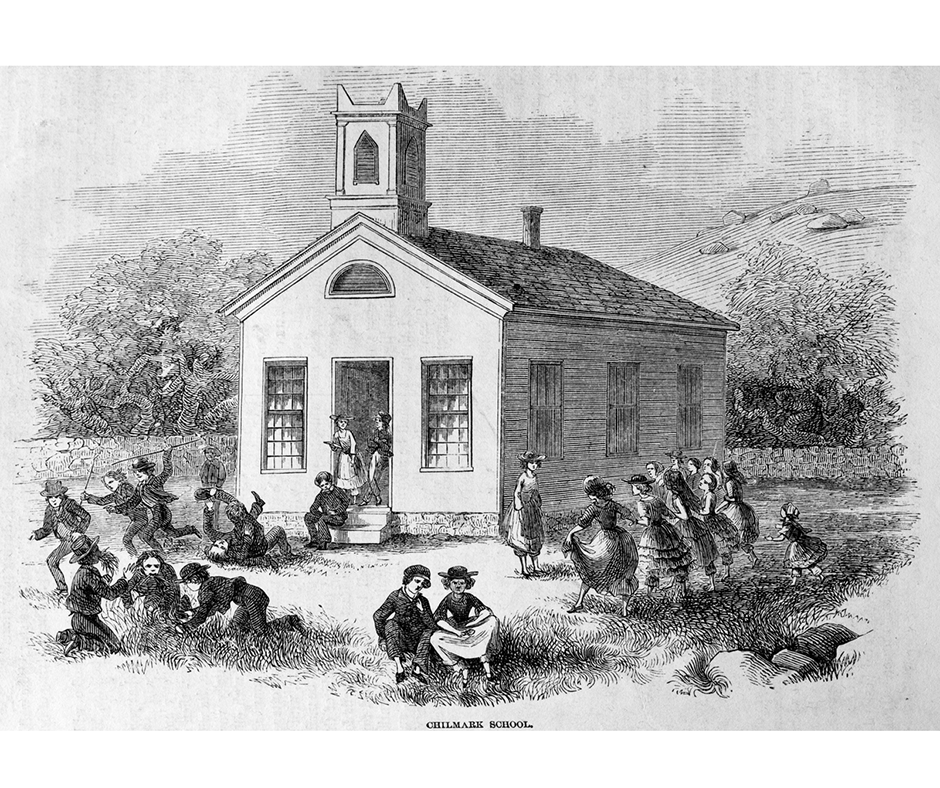Schools took root early in Mass.
MTA founded at birth of universal education
Massachusetts is known as the education state for good reasons. The state’s commitment to education started early. We had the first public schools, and in the MTA, one of the first education associations.

Founded in 1635, the Boston Latin School is the oldest continuously operating public school in the country. It was a tuition-free, boys-only secondary school. Less than a decade later, the towns of Dedham and Rehoboth created schools that were supported by the local taxpayers.
Recognizing the importance of literacy, the Legislature passed a law in 1642 requiring heads of households to teach their dependents, including apprentices, how to read and write. Since that law was often flouted, five years later the Legislature passed a new law requiring communities of 50 households or more to hire a schoolmaster. This was called the Old Deluder Satan Act since its purpose was to thwart “ye old deluder, Satan” in his goal “to keepe men from the knowledge of ye Scriptures.”
Though called public schools, education was not necessarily free during the Colonial period. Tuition in the form of money, firewood or lodging for the schoolmaster often had to be provided. The children of the poor and girls were rarely educated. Some girls and young children were taught by women working out of their homes for a small fee in what were called Dame Schools. Education was not compulsory until more than 200 years after the first public schools were founded.
While the earliest schools mainly served a religious purpose, that mission broadened in the 18th century. The education clause of the state Constitution, written by John Adams, clearly spells out a civic purpose for education.
Adams wrote, "Wisdom and knowledge, as well as virtue, diffused generally among the body of the people, being necessary for the preservation of their rights and liberties; and as these depend on spreading the opportunities and advantages of education in the various parts of the country, and among the different orders of the people, it shall be the duty of legislatures and magistrates, in all future periods of this commonwealth, to cherish the interests of literature and the sciences, and all seminaries of them; especially the university at Cambridge, public schools and grammar schools in the towns…” [emphasis added]

More than 200 years later, the MTA and other public school advocates with the Council for Fair School Finance have relied on that clause to advocate for state funding for education so that all children have access to quality public schools, regardless of the property tax wealth of their communities.
Public education was expanded greatly in the mid-19th century under the leadership of Horace Mann, a lawyer, politician and school board member in Dedham who became the country’s first secretary of education in 1837, just eight years before the MTA was founded. Mann’s six main principles for Common Schools look familiar today.
- the public should no longer remain ignorant;
- that such education should be paid for, controlled, and sustained by an interested public;
- that this education will be best provided in schools that embrace children from a variety of backgrounds;
- that this education must be non-sectarian;
- that this education must be taught by the spirit, methods, and discipline of a free society; and
- that education should be provided by well-trained, professional teachers.
To further the training of teachers, Mann also oversaw the establishment of so-called “normal” schools (from the French "école normale") for educating future teachers. These schools evolved into the state universities we have today.
In the midst of debates about all these changes, the members of the Essex County Teachers Association decided that a statewide association was needed so that teachers could play a greater role in shaping reforms. They called for “practical teachers” to gather at Brinley Hall in Worcester on November 24, 1845. In a flier advertising the meeting, they wrote:
"We feel that our own Association, formed more than sixteen years ago, has, in a quiet and unobtrusive manner, done much for the cause of education in our county, and we are desirous that a State organization may be formed, which shall exert a similar and more extended influence. Such an association will bring together teachers from various parts of the State, and among them will be men of sound views and large experience, who will be ready to impart of 'their abundance' for the common good. In this way, whatever of excellence may exist in one part of the State will be diffused through other parts."
Eighty-five male teachers and administrators gathered that day and voted to create the Massachusetts Teachers Association, the third such association in the country. New York and Rhode Island had both established state education associations earlier that year.
Male teachers were allowed to join the MTA for $1. The main activities were to discuss education issues and publish educators’ perspectives in The Massachusetts Teacher, a periodical which was launched in 1848.
"[W]e are desirous that a State organization may be formed, which shall exert a similar and more extended influence."
Essex County Teachers Association in an 1845 flier inviting teachers to found the MTA
But what about the role of women in the MTA?
An abstract describing the MTA from 1845 to 1880 notes that the role of women in the association was hotly contested. In 1851, and again in 1853, the Rev. Cyrus Peirce proposed allowing women to join as full members. (Peirce, an educator and minister, later became the founding member of the country’s first normal school that evolved into Framingham State University.)
Female teachers were allowed to become “honorary” members in 1854 and finally were granted full membership in 1866. That change was just the first of many that expanded the membership and mission of the MTA into the 117,000-member union that it is today.